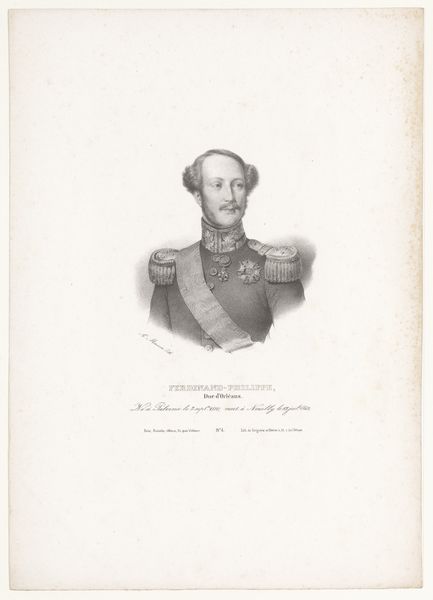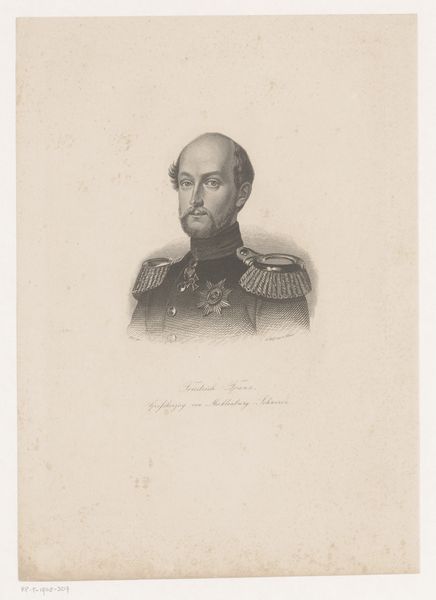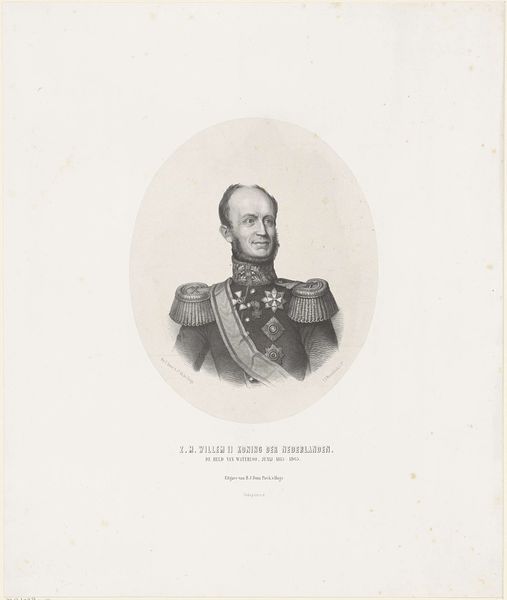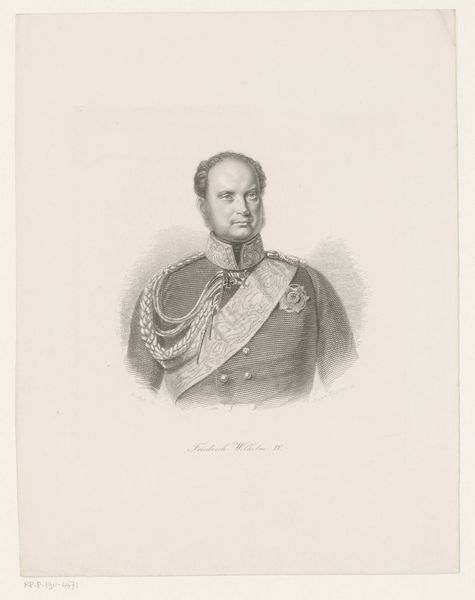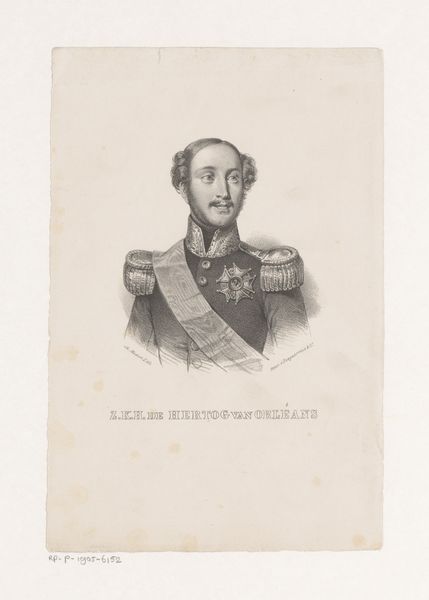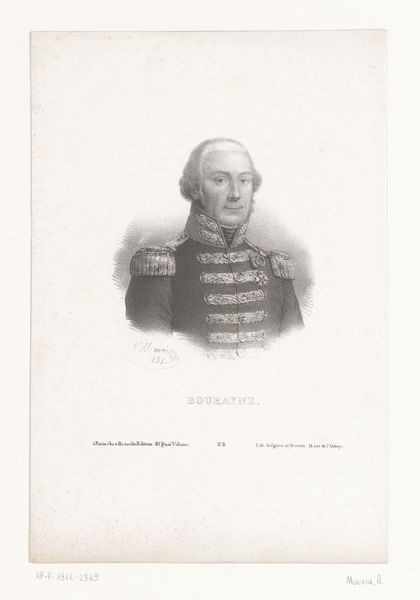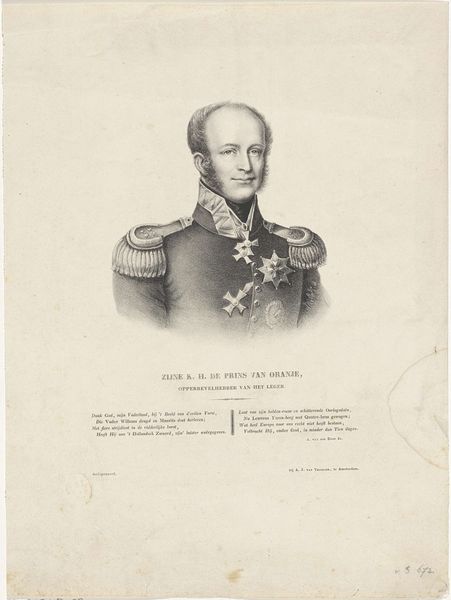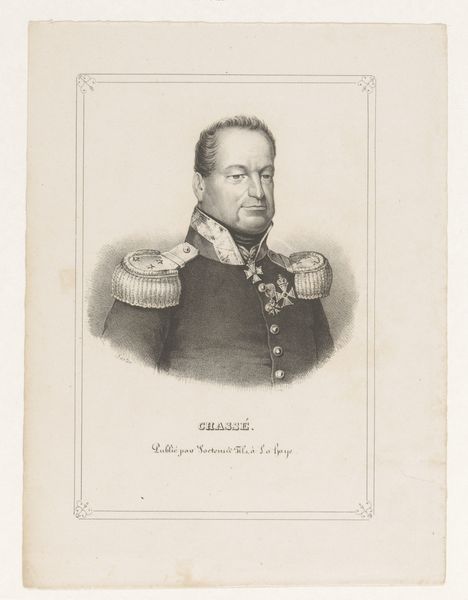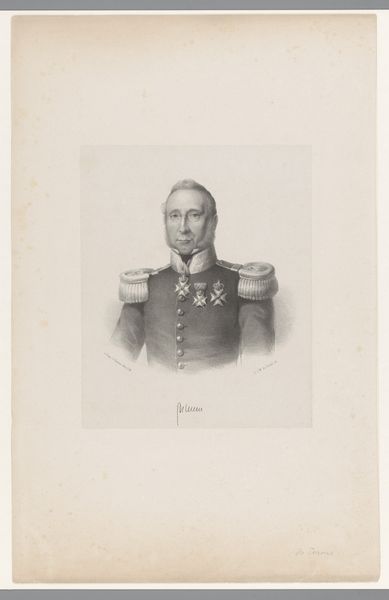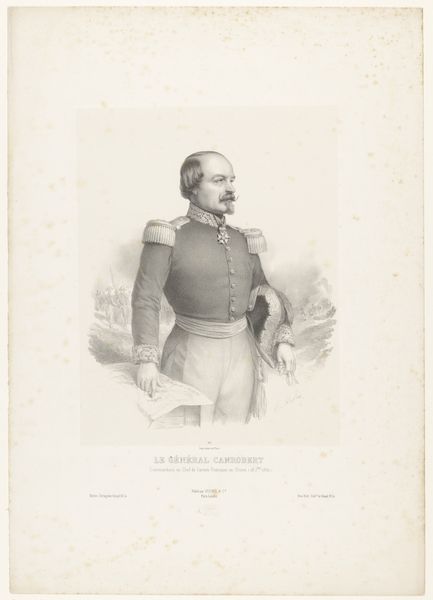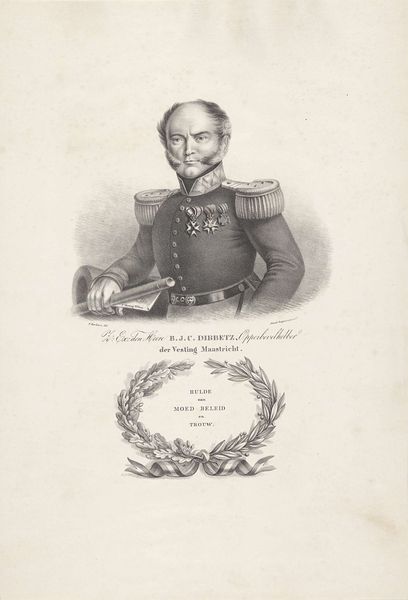
lithograph, print
#
portrait
#
lithograph
# print
#
realism
Dimensions: 323 mm (height) x 259 mm (width) (bladmaal)
Editor: So, this is a lithograph from around 1877 of "Friedrich von Gössel" by Frederik Schepelern, part of the Statens Museum for Kunst collection. It looks pretty formal – a military man in his uniform. I'm struck by the precision of the printmaking. What do you see in this piece? Curator: Well, looking at it through a materialist lens, it speaks volumes about production and consumption. The very act of creating a lithograph—a repeatable image—democratizes representation, moving it away from unique painted portraits accessible only to the elite. Consider the labor involved: the stone preparation, the printing process itself. It’s a move towards mass production of imagery. Editor: That's interesting. So, you're saying the *medium* is as important as the *man* in understanding the portrait? Curator: Precisely. Think about who would commission and purchase such a print. Probably other members of the military, aspiring officers, or even family seeking to commemorate his status. The material itself – a lithographic print - becomes a tool for solidifying social hierarchies and celebrating the power structures of the time. It reflects how power is not just asserted, but reproduced and disseminated through material means. Editor: I see your point. It makes me wonder about the original stone, how many prints were made, and who owned them. This connects the "high art" of portraiture to more commonplace, reproducible imagery. Curator: Exactly. And that challenges the traditional art historical focus on the "genius" of the artist and puts the focus on the socio-economic conditions in which this portrait was created and consumed. It's not just a likeness, but a material object deeply embedded in a system of power. Editor: That makes me rethink what I considered just a formal portrait. I now see it also represents the social conditions of its time. Curator: And hopefully a greater appreciation of the labor and the social implications of making an image like this.
Comments
No comments
Be the first to comment and join the conversation on the ultimate creative platform.
